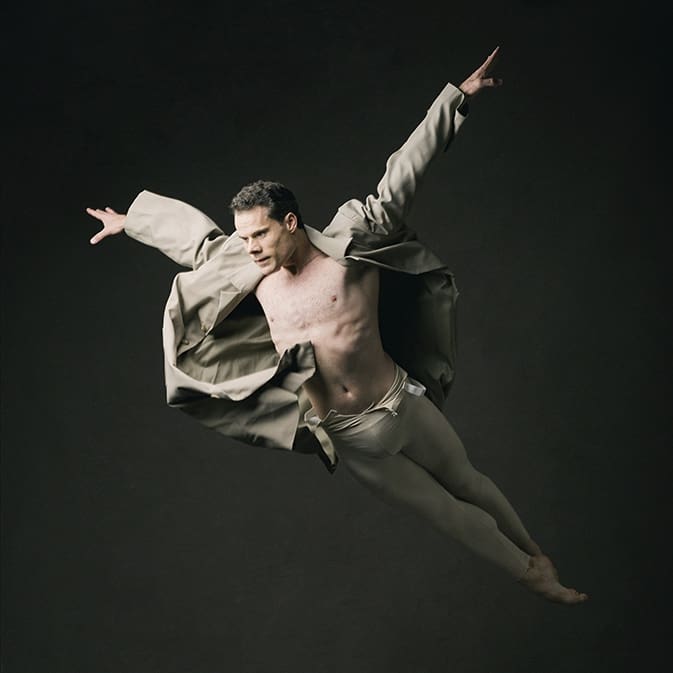Before we announce the winners of the 2017 MyEntWorld Critics’ Pick Awards, we’re proud to present our annual Nominee Interview Series.
Principal Dancer Piotr Stancyzk’s strong features have made him a popular casting choice for some of the National Ballet of Canada’s darker roles, including Stanley (in A Streetcar Named Desire) and Eugene Onegin, but it’s his strong technique and emotional depth that make him so well-suited for these character-driven roles. As Leontes, in Christopher Wheeldon’s The Winter’s Tale, Piotr delivered a mesmerizing portrayal of a man consumed by jealousy. His Outstanding Ballet Performance-nominated transformation from the amiable King of Sicilia into a tyrannical madman was intense and, at times, chilling to watch.
Do you remember the first ballet you ever saw?
Yes I do, it was The Nutcracker, back in Poland. I must have been about seven years old and I slept through the whole thing. I was completely uninterested in ballet.
So what made you change your mind and want to do ballet?
I didn’t change my mind. My parents were going through some marriage difficulties and they sent me to a ballet school because my sister was there and it was easier to arrange for both kids at one school. The first year I really did not enjoy ballet, but as I grew up, I slowly fell in love with it.
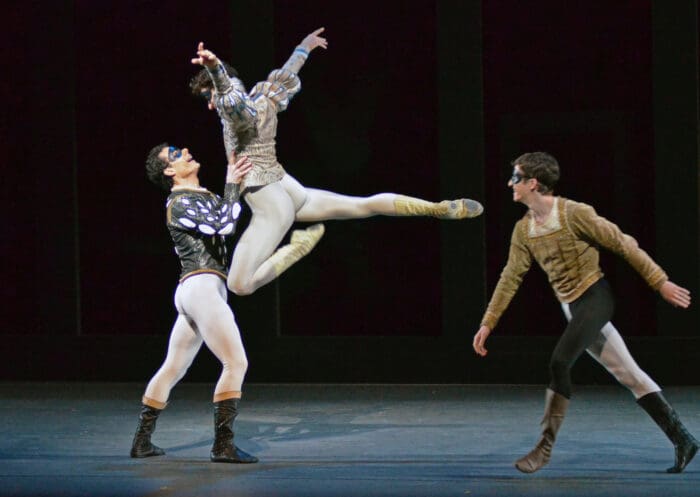
Over your career, what have been some of your favourite performances?
There have been many. I’ve been on stage here for 27 years; 20 years with the National Ballet company and 7 years at school. Some selected ones are definitely the roles of Mercutio in Romeo & Juliet and Onegin in Cranko’s Onegin. Of course Leontes in The Winter’s Tale. I loved working with Christopher Wheeldon so that was a very, very nice artistic journey. There are some great ballets like The Man in Black by James Kudelka, which is actually coming back in our June season. And the ballets of John Neumeier, definitely A Streetcar Named Desire and Nijinsky. You know, there are so many great works that I’ve been fortunate enough to dance that it would take quite a while to list them all.
What are some of the biggest challenges you’ve had to overcome in your training and career?
The biggest challenges have definitely been injuries; the dancing profession is tough on the body. I’ve had severe injuries to my knees and two herniations in my back. I recently had a first-degree separation of my right shoulder. So, it takes time to recover and it’s tough on the body. I think that is the hardest thing that dancers go through.
When listing your favourite performances you mentioned a few legendary, contemporary choreographers, like Cranko and Neumeier. What are some of the qualities that attract you to their work?
They really let you go on an artistic journey. You feel wonderful as an artist being onstage and giving all you have to the audience and there are not many choreographers who can capture that but there are definitely a few selected ones who really bring the art of dance forward for the audience. It’s not just movement, and it’s not just acrobatics – which is also art, I’m not saying it’s not, it’s art in a different form – but for me as an artist, it’s also very important to feel, which is why I mentioned John [Cranko] and James Kudelka and Christopher [Wheeldon]. I’ve never worked with Yuri Killian but apparently he is also very artistic in that way. I’ve worked with many, many great choreographers. It’s been a blessing.
As you mentioned, you’ve been with the National Ballet for two decades now. What is it about the company that makes you want to stay here?
One of the main reasons I’ve stayed with the National Ballet is because it has a very wide-ranging repertoire and we dance so many great ballets; it’s a trademark of the company. We dance all of Cranko’s ballets, Onegin and Romeo and Juliet, and we dance Forsythe and Neumeier’s works. I’ve danced Killian’s Soldier’s Mass. We are very good at all of these things, so that’s why I’ve stayed. And I’ve met great people here over the last 20 years and the staff has been great. I’m an artist because these people who work with me have made me who I am today. If it were not good for me as a person I would have left, but it’s a great environment.
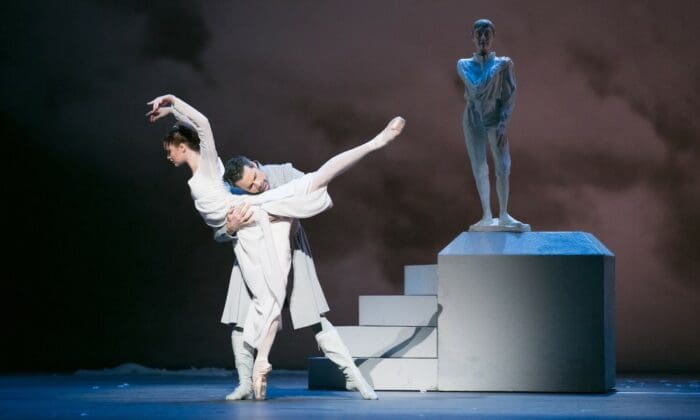
When you’re working on a ballet that’s a literary adaptation, like The Winter’s Tale, or based on historical persons, like Nijinsky, do you do much research into other interpretations of the character or what that person was really like?
The only interpretation that matters is the choreographer’s interpretation. I do my own research, but the bottom line is that the choreographer at the front of the room tells me what he’s trying to show to the audience and we work together to achieve that. I have different takes on things and I will probably try to dance things in a different way, but if that is not in line with the choreographer’s vision, then we are sort of in conflict, so most of the time it is the choreographer who sets what he wants to show and I try to bring the best out of my own experiences to execute his decisions and what he wants to show.
Can you talk about the importance of acting in ballet, and the process of building a character through movement?
The acting is very important; that is where you need to research, where you need to read books. For example, when I was doing The Winter’s Tale I’d read the play just to have a grasp of the character, and when we did Nijinsky I’d read his diaries, so obviously that helps in creating that character but, as I said, it all has to be within what the choreographer wants. When it comes to the movement and the vocabulary of the steps, I have very little input. Obviously I’m trying to make the steps the way I want to do it because I don’t want to dance exactly like anybody else, but this is all dictated by the choreographer or the person at the front of the room.
You’re nominated this year for your role in The Winter’s Tale. What was it like working with Christopher Wheeldon on that ballet?
It was a wonderful time. I’m a really big fan of Christopher, he’s a very intelligent choreographer. He’s very demanding, he can be tough at times, but he is such an intelligent guy and he speaks very well – he is really able to vocalize what he wants to show to the audience -so I had a wonderful time. I’m hoping that I’m going to be able to work with him again sometime soon but we’ll see.
Leontes appears to be a very physically and emotionally challenging role. How did you prepare for your performances?
The beauty of this ballet is that the range of emotions is so wide. It is like two polar opposites; you have this beautiful young man and loving husband who just over time deteriorates into a monster. Besides reading and talking to Christopher, I didn’t really do that much extensive research. I felt that I understood the role really well from the beginning; I didn’t struggle with it. It was a process we took several weeks and several conversations to develop and what helped me a lot was actually the vocabulary of the steps. Somehow Chrisopher put the emotion into the choreography so well, going from this novel movement and beautiful classical lines into slowly deteriorating, very awkward steps, that it really helped develop the character and guide you through the emotional journey that this ballet is.
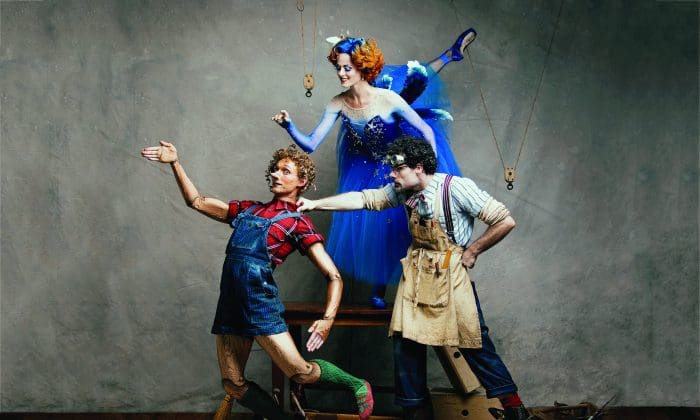
You also created and debuted the role of Geppetto in Pinocchio this year. How does the creative process differ when you’re creating a new work versus taking on an existing role?
Well, there is a lot more input. If the role is being created on you, you have way more input on the steps and on the character and there’s a lot more conversation happening. I enjoyed working with choreographer Will Tuckett. He’s a great wit, a very intelligent guy, and we had a very good time together. We had hours and hours of conversations with Will. He was actually making fun of me by the end for asking questions all the time but I needed, as an artist and as a human being, to be part of the process because I wanted the work to have a little imprint of me, of who I am.
You also danced A Streetcar Named Desire this year, which not only has a lot of violence in it, but it has, particularly, extra-sensitive sexual violence in it. How did you and your partner navigate that?
It was a bit hard at the beginning, not so much for Svetlana [Lunkina] who did it with me, but for me it was tough because I didn’t feel good walking off and finishing the show. You know, John [Neumeier] depicts Stanley as this thug, this ape – he’s such a basic man – extremely strong, and extremely sexual, and there is the whole explicit rape scene toward the end of the ballet, so I was walking offstage and really not feeling great about myself because it is a horrible act that has just been portrayed onstage. I think it was one of the toughest ballets, one of the hardest emotionally, that I’ve done in my life because of the character. John really took Stanley’s character to the extreme and that was tough to do.
Leontes is also a dark role; you seem to play a lot of these dark characters. Is that something that you have to struggle with, to keep yourself out of that head space?
No. One reason I get these roles is because I don’t look like a prince. I have very strong features and so when these types of roles come in they want me to do them because I suit them really well. A lot of casting in this profession is done based on our looks. Through the years, I keep extending my vocabulary and my emotions on stage. You have to keep pushing yourself and your limits and you have to keep pushing them both ways – the more dramatic roles, the more explicit like Streetcar roles, and then the happier roles like in Pinocchio, like Nikolai in The Nutcracker – so that as an artist you keep growing and going farther than normally you would. But does it impact me or change me when I go home? No, not at all.
How did you get involved with the Canadian All Star Ballet Gala and what was that experience like?
It’s organized by my friend Svetlana Lunkina, who is a principal with the company. She asked me to dance this year so I said yes. The experience was fun. I’ve done a few galas in Miami, Houston and Vancouver and it’s always nice to meet new people, new dancers. I’m heading toward the end of my career and all these new stars are coming up so it’s nice to meet them and watch them and it’s wonderful to spend time with them and be onstage with them.
You were thanked in the acknowledgements of Eva Stachniak’s novel The Chosen Maiden, about Bronislava Nijinska. How did that involvement come about?
That came about through Veronica Tennant. Eva Strachniak happens to be Polish so we were introduced, we exchanged phone numbers and we got together for dinners and meetings where we would just talk about ballet. Eva is such a great writer. She’d done months, years of research to write this book and we had countless hours of talking about dancers and how we work and how the stage looks behind the scenes and the dynamics of the company – not even right now, because the dynamics in companies these days are very different from what they were in the 1920s. It was great. She widened my horizons as an artist and it was a wonderful experience for me. We’ve stayed in touch and become really good friends.
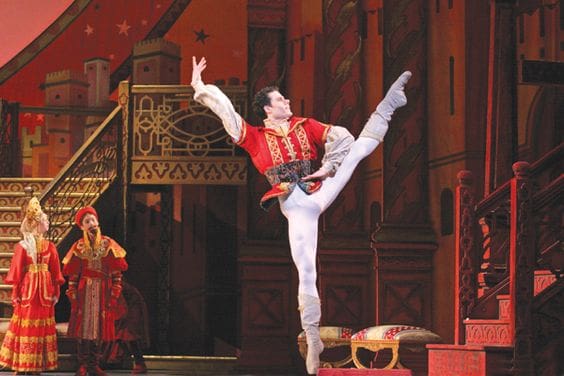
Is it surreal every year to go back and dance the Nutcracker knowing that that was the ballet you slept through way back when?
You know what, I never thought about it that way. I think the difference between the Nutcracker I saw in Poland and the Nutcracker we have here is huge. I’ve travelled around, I’ve seen a lot of works, and I think this is the best Nutcracker that was ever created in the history of ballet. It’s the best show for children and it is extremely physically hard, for the men especially. We are onstage doing solos and with kids all the time. I never think about that original show, I never go back that far, but I think that what is surreal is that I’ve been doing this for 20 years. Every year for 20 years we’ve been doing this, and I’m not tired of it; I look forward to dancing it again next year.
Do you have any dream roles you haven’t gotten to dance yet, or someone you’d like to work with?
No, I feel quite accomplished as an artist and I don’t feel like I’ve missed anything in particular. I have never worked with Yuri Killian and I would like to work with him. I don’t think that it’s something that’s going to happen now, because I think it’s too late, but he’s one of the choreographers who I would have liked to work with. And also Maurice Bejart because I’ve danced his works, but never got to work with him. Bejart has passed but Killian, well, I guess we’ll see, you never know.
The 2018/19 season was just announced. What work are you most looking forward to?
I’m looking forward to Anna Karenina for sure. It’s a new work of John [Neumeier]’s and I loved working with him, he’s a great guy to work with, and this is going to be another artistic journey for me. I’m not sure what role I’ll be doing in the ballet yet but I hope it’s going to be something exciting. And I’m looking forward to the William Forsythe program we’re doing in June. We’ve done The Second Detail, but there are two other works that we haven’t done so that’s going to be very interesting. And maybe he will come to Toronto and I’ll get to work with him.
Do you have an all-time favourite ballet?
You know, that changes with time as I grow as an artist. It used to be Romeo and Juliet. It used to be Onegin, The Winter’s Tale. But over time you change as a person and start seeing beauty in different works. There are a lot of favourite ballets that I have seen and danced, but I wouldn’t say that I have one particular favourite that I always see as the most beautiful.

